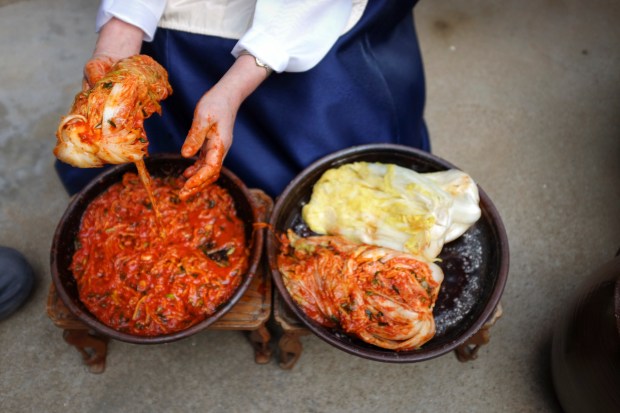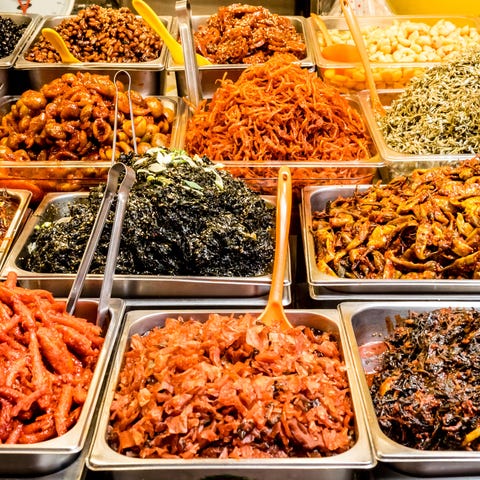Gwangjang Market
Street food paradise: mung bean pancakes, beef tartare, kimbap
Street food paradise: mung bean pancakes, beef tartare, kimbap






"Established in 1905, Gwangjang Market is South Korea’s oldest and largest market; I experienced it as always filled with hungry locals and visitors clustered around crispy bindaetteok (mung bean pancakes) and steaming bowls of kalguksu." - Katie Chang

"Gwangjang is one of Korea’s largest hanboks (traditional clothing) and textile markets, but it also happens to be the oldest street food market in the country, filled with food stalls boasting a wide array of dishes. See something you like? Just grab a seat and start ordering. Look out for yukhoe (Korean beef tartare with sesame oil and Asian pear) and bindaetteok (fried mung bean pancakes). Know before you go: Bring some won to make paying easier." - Matty Kim


"One of the city’s oldest covered markets, Gwangjang is also its largest, with more than 1,500 vendors hawking textiles, handicrafts, and clothing. The real highlight, however, is the food court on the ground floor, where dozens of stalls dish up everything from steaming seafood soups and grilled meats to mandu (dumplings) and bindaetteok (mung bean pancakes). Most of the items are accompanied by free banchan (side dishes), so you’ll want to pull up a plastic stool and join the locals. If menus are only available in Korean, simply point to the dishes you want. With such cheap prices, there’s no harm in indulging."


"One of the city’s oldest covered markets, Gwangjang is also its largest, with more than 1,500 vendors hawking textiles, handicrafts, and clothing. The real highlight, however, is the food court on the ground floor, where dozens of stalls dish up everything from steaming seafood soups and grilled meats to mandu (dumplings) and bindaetteok (mung bean pancakes). Most of the items are accompanied by free banchan (side dishes), so you’ll want to pull up a plastic stool and join the locals. If menus are only available in Korean, simply point to the dishes you want. With such cheap prices, there’s no harm in indulging."


Tony has ddukboki (spicy rice cakes), japchae (sweet-potato noodles), and soondae (blood sausage)
